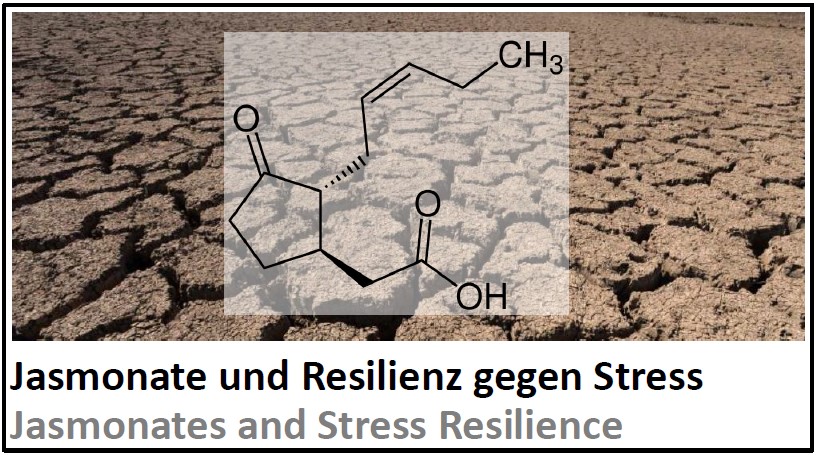Jasmonate and Climate Stress
 |
Jasmonic acid and plant resilience to stress. [39] Riemann M, Dhakarey R, Hazman M, Miro B, Kohli A, Nick P (2015) Exploring jasmonates in the hormonal network of drought and salinity responses, Frontiers Plant Sci 6, doi: 10.3389/fpls.2015.01077. pdf 132 quotations. pdf
What is it about? Resilience against abiotic stress such as drought, salinity and alkalinity is getting progressively important to safeguard agriculture against the consequences of climate change. Not only water scarcity is a problem but also stress through salinity, because artificial irrigation leaves back salt in the soil due to evaporation. Numerous soils on our planet, in addition, contain magnesium salts, such that under drought, the roots are also damaged by alkalinisation.The resilience of crop plants against these stress factors is steered by the stress hormone jasmnic acid. Our review not only surveys the role of jasmonic acid in the response to different stress forms, but also develops a modular model, how the plant can discern different forms of stress. The perception of stress is acting by combination. Drought is sensed by influx of calcium, for salinity an ionic stress component is added, while alkalinity is sensed, when in addition proton concentrations in the apoplast decrease. We show further that resilience is based upon a rapid activation of jasmonate signalling that remains transient, though, because it is rapidly de-activated afterwards. Instead, a slow accumulation of the signal, followed by a long-term elevation leads to damage - not so different from a human burnout syndrome.
|
